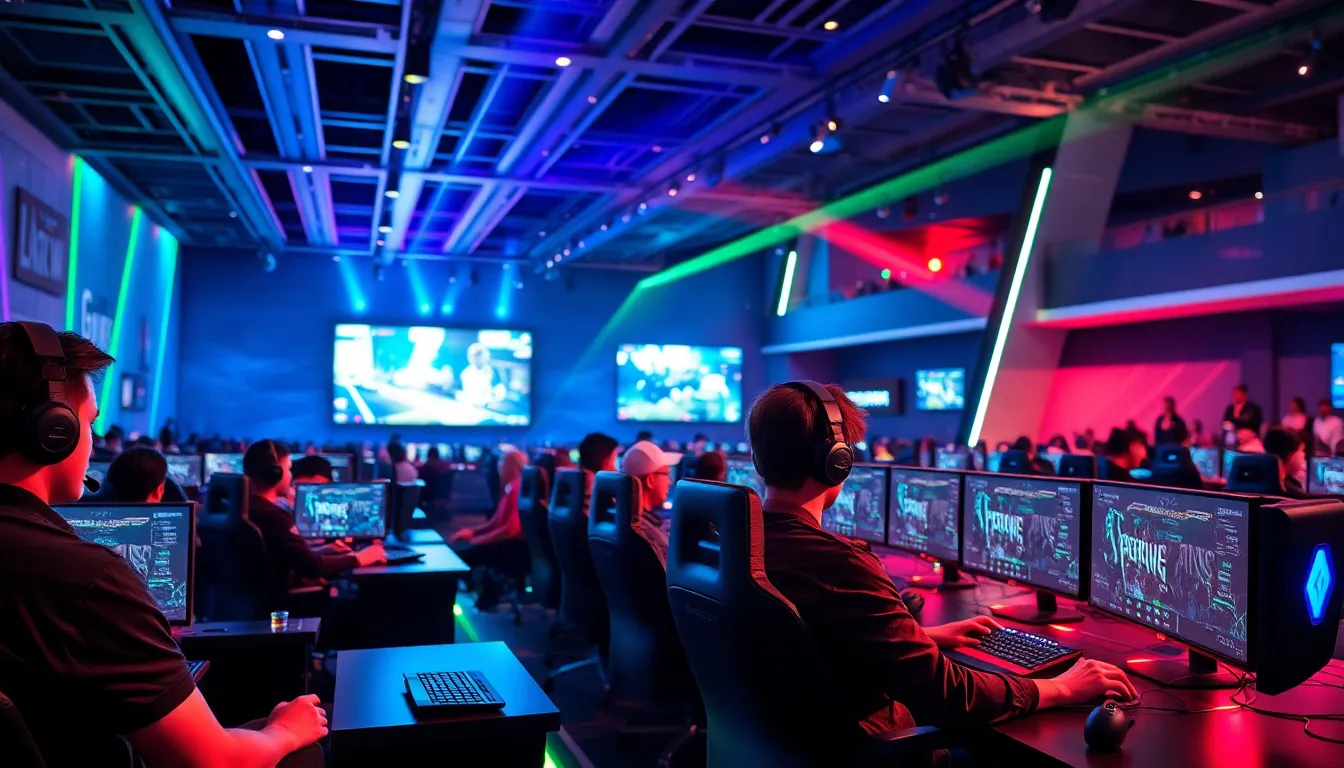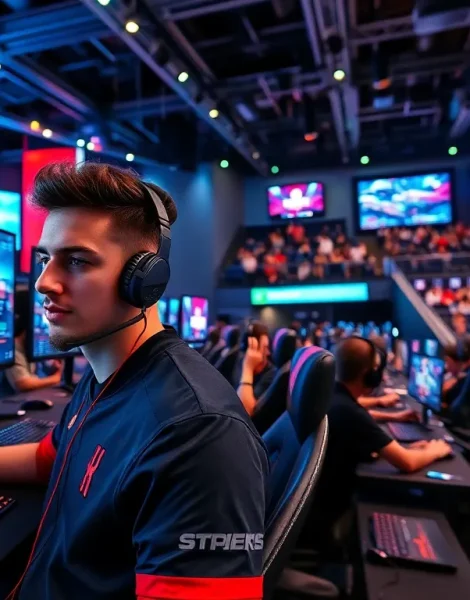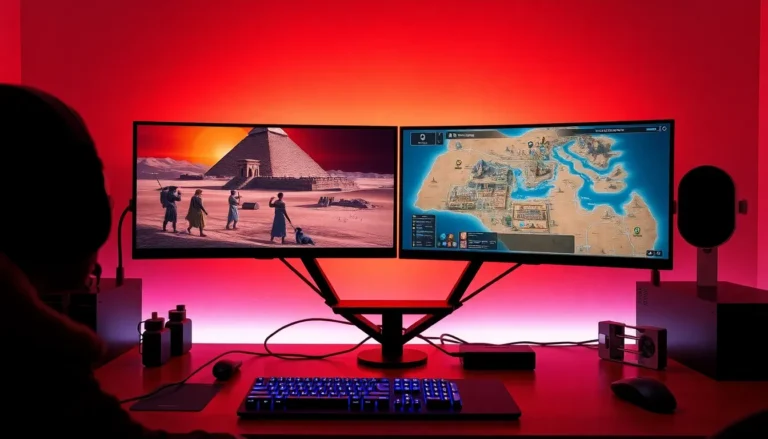In a world where couch potatoes are transforming into keyboard gladiators, esports technology is the magical potion behind this epic shift. The gaming universe has exploded, bringing together a combination of skill, strategy, and sheer entertainment that is difficult to resist. Ever wondered why your friend is glued to the screen during tournaments? Spoiler alert. It’s not just the flashy graphics or the nail-biting competition, but the incredible technology that enhances their experience. From supercharged gaming rigs to groundbreaking software, let’s unravel the captivating world of esports technology that’s taking the gaming scene by storm.
Table of Contents
ToggleOverview of Esports Technology

Esports technology encompasses a plethora of advancements tailored specifically for competitive gaming. At its core, it combines hardware and software innovations that reshape how games are played and experienced. Gone are the days when gaming meant sitting at a clunky desktop with subpar graphics. Today, players thrive on sophisticated systems equipped with high-performance GPUs, lightning-fast processors, and specialized peripherals that enhance gameplay. It’s not merely about winning: it’s about creating an immersive environment where players can perform at their best.
Also, esports technology isn’t solely for the players. Spectators are also transformed into participants of this digital spectacle, thanks to enriched visual and audio experiences. Interactive broadcasting techniques and advanced streaming platforms allow fans to feel the adrenaline rush as they follow their favorite teams or streamers in real time.
The Evolution of Gaming Hardware
Hardware evolution in gaming has been nothing short of revolutionary. The transition from bulky consoles to sleek, powerhouse machines has drastically altered gameplay. Take the GPU, for instance. Modern graphics cards can process billions of calculations per second, rendering stunning visuals that were once thought impossible. This level of performance not only makes the game visually appealing but also provides a crucial edge in competitive scenarios where every millisecond counts.
Also, the importance of peripherals like high-res monitors, ergonomic keyboards, and responsive mice cannot be understated. These elements have evolved significantly, catering to gamers’ specific needs. A dedicated esports headset with spatial audio, for example, enhances a player’s ability to pinpoint enemy movements, offering a significant tactical advantage.
And let’s not forget about the impact of off-the-shelf gaming rigs. Companies have tailored packages for e-athletes, ensuring they have the latest technology to maximize their performance.
Innovations in Software for Esports
Software innovations have equally reshaped competitive gaming landscapes. Today’s gaming titles incorporate sophisticated algorithms for AI, providing a more dynamic and challenging environment. As players face tougher opponents, they need to hone their skills relentlessly.
Also, game developers are tapping into cloud technology, offering real-time updates and enhanced stability. Imagine a patch that downloads in seconds rather than minutes. This improvement keeps gamers engaged and ensures that any issues are swiftly addressed, keeping the competitive scene fresh.
Further, analytics software has become invaluable. Many teams rely on data from gameplay analysis to refine their strategies. The beauty lies in how data informs decision-making, allowing teams to adjust tactics based on previous matches, identify opponent patterns, and optimize player roles.
The Role of Streaming and Broadcasting Technology
Streaming technology has taken esports to a new level, connecting players and fans like never before. Platforms such as Twitch and YouTube Gaming serve as hubs for live streaming, fostering communities bound by a shared love for gaming. The power of these platforms lies not only in providing content but also in enhancing interactions through real-time chats and community features, creating a vibrant culture around esports.
Also, broadcasting technology has come a long way from basic streams. High-quality broadcasts now include multiple camera angles, instant replays, and even on-screen statistics that provide viewers with a comprehensive viewing experience. This multi-layered approach not only engages the audience but educates them, transforming casual viewers into knowledgeable fans.
As esports continue to gain traction, expect even more innovations. Virtual and augmented reality technologies are already making headway, promising to deliver unprecedented levels of engagement.
Analytics and Data in Esports
Data analytics is becoming the secret sauce behind successful esports teams. Data-driven decision-making allows teams to evaluate performance metrics that were unfathomable a few years ago. Through extensive data collection, teams gain insight into player performance, game strategies, and opponent behavior.
Advanced analytics platforms make it possible to dissect every match thoroughly. Players can see the effectiveness of their actions during gameplay, offering opportunities for improvement. In competitive environments, tiny margins can dictate victory or defeat, making these analytics invaluable.
Also, the integration of machine learning provides teams with predictive models for upcoming matches, allowing for tailored strategies that can counter an opponent’s strengths or exploit their weaknesses.
Future Trends in Esports Technology
The future of esports technology gleams with promise, ushering in trends that will further revolutionize the scene. As 5G technology becomes ubiquitous, gamers will enjoy ultra-fast internet speeds, reducing latency and enhancing online competition.
Plus to connectivity improvements, we might see augmented reality settings that alter the way players and spectators interact. Imagine a spectator being able to see game stats hovering above their favorite players in real time, a mind-blowing experience on the horizon.
Besides, artificial intelligence will likely take center stage, not just as an opponent but as a coach. AI-driven tools could provide personalized training regimens for players, tailored to their strengths and weaknesses, creating a world where every player can maximize their potential.









